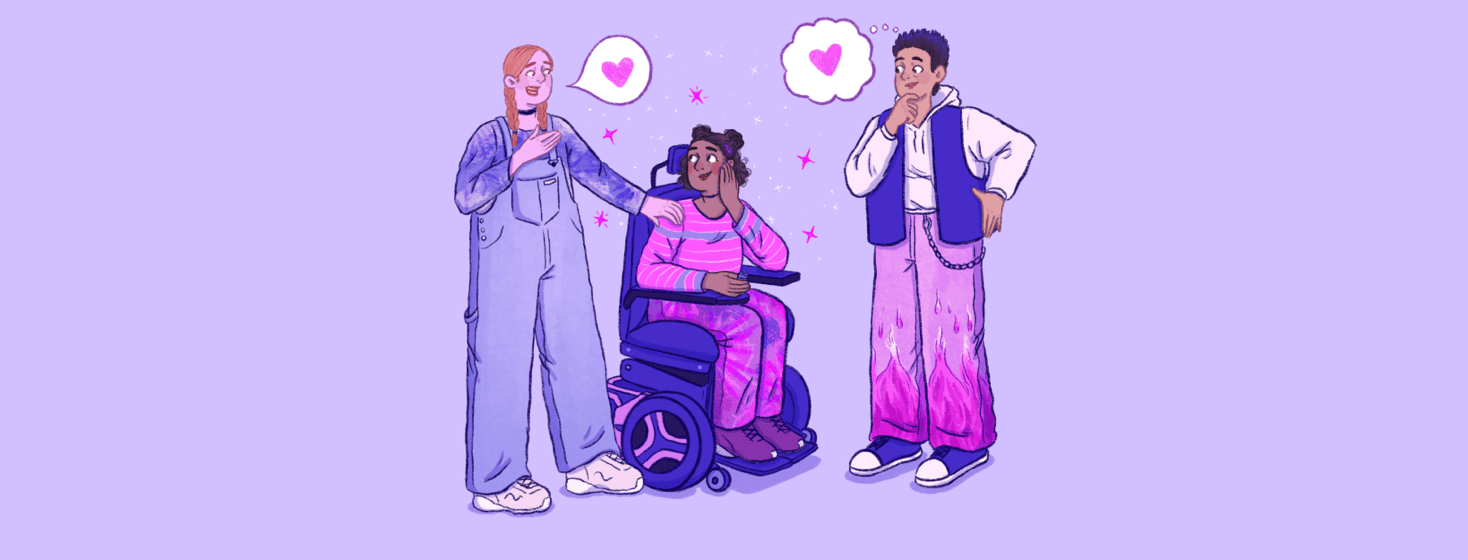How Clothes Made the Difference to My Daughter
My daughter, who had spinal muscular atrophy, was mainstreamed in a regular classroom throughout her school years.
We lived in a semi-affluent area. All her classmates were able-bodied. Her fellow classmates accepted her even though she was in an electric wheelchair.
Incidentally, she never considered herself physically challenged with spinal muscular atrophy (SMA).
My daughter wanted to be like her classmates
When she was in fifth or sixth grade, she told my late wife and me that she wanted to dress like the other children in her class.
Sometimes we bought her clothes at the big-box stores. She told us repeatedly, “that people should not be shopping for clothes in a store that greets you with the announcement, ‘Attention, K-Mart Shoppers...’” or that sells food and clothes in the same store! (I was amused with that comment!)
My daughter wanted to buy contemporary clothes like the other girls she was friendly with, from the private more current-fashion boutique-typed stores in the neighborhood, like the big cities had.
Beautiful shoes, although she cannot walk
She was unable to walk but noticed the beautiful shoes that the other girls wore. Consequently, My daughter wished she could wear popular shoes that were in fashion at the time.
All my daughter really wanted to do was to fit in. She felt out of place wearing the clothes that she was wearing, which we chose for her. She wanted to pick out her own stylish clothing from the more popular teen girl boutiques.
My late wife and I talked, and after giving it much thought, felt that my daughter was seeking some independence in her life.
Therefore, being able to make some decisions, no matter how small, was significant to her.
Shopping spree for purple sneakers
So, my wife took her on a girls' only shopping spree to the stores that she wanted to shop in!
The first store was the shoe store. She picked out several styles she liked. The salesman tried on the shoes for her. She looked at them in the mirror, felt which ones were comfortable to wear, and bought a low boot style shoe and a purple pair of sneakers. Boy, she was feeling proud of herself.
Then they went to the boutique store and bought a pair of stylish pair of tied-dyed jeans with a colorful matching top. My wife said that she was “in seventh heaven.”
Continuing with their shopping spree, they both went in for a manicure and my daughter was able to pick out her own special color of nail polish.
After the shopping spree, we all met at her favorite restaurant in the mall, Cheesecake Factory, for lunch. Consequently, this was a fun and relaxing experience for all of us! It took us away from the medical concerns of dealing with the day-to-day issues of spinal muscular atrophy.
This pick-me-up was just what she and the family needed!
Like any teen, looking good and fitting in
She excitedly went to school on Monday, dressed in the clothes she bought that weekend. All the girls in her class were giving her hugs and compliments on how pretty she looked! They envied her taste in clothes. My daughter was feeling like a million bucks!
Incidentally, she desired a much-needed break from the mundane issues of life of living with the daily special medical issues of spinal muscular atrophy. Transforming her into a “girly girl” truly lifted her spirits tremendously!
More importantly, she felt good about herself. In addition, her fellow students became true girlfriends and welcomed her into their friends group. She was now considered "cool." She was invited to their playgroups and birthday parties, which she enjoyed.
In conclusion, this socialization and transformation made her better able to cope with the effects of making friends and living with spinal muscular atrophy.

Join the conversation